About Raghavendra Swamy
History of
Sri Raghavendra Swamy
Sri Venkatanatha proved to be a very brilliant scholar from a very young age who learnt to play the Veena very proficiently thanks to his father and grandfather.
After his father’s demise, Venkatanatha was brought up by his brother Sri Gururaja Bhatta and completed the initial portion of his education under his brother-in-law Lakshminarasimhacharya’s guidance in Madurai.
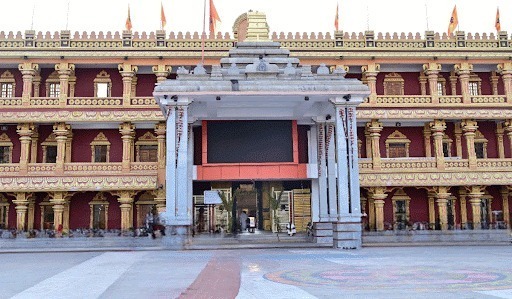
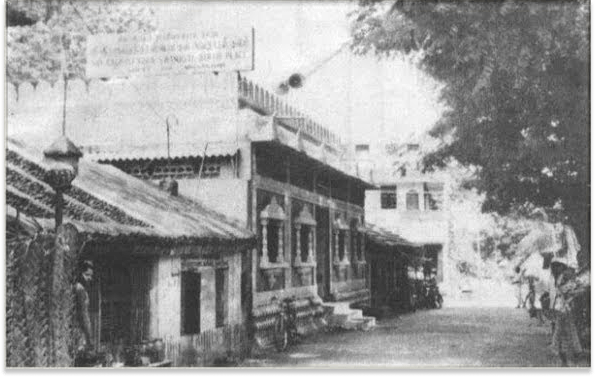
Sri Venkatanatha was already very well versed in bhashyas and consistently prevailed over renowned and reputed scholars, irrespective of the complexity of the debates. He was an ardent devotee of Sri Moola Rama and Sri Panchamukha
MukhyaPranaDevaru (the five-faced form of Hanuman – Pancha meaning five, mukha meaning faces). He spent a large part of his Poorvashrama life teaching Sanskrit and the ancient Vedic texts to children.
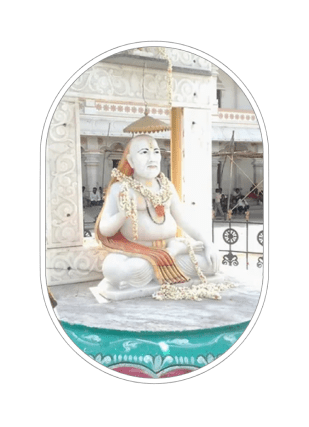
1595
Sri Raghavendra Swamy was born as Sri Venkata Natha (Venkata Ramana), the second son of Sri Thimanna Bhatta and Smt. Gopikamba on Thursday, Sukla Navami of Phalguna month when the moon was in Mrigashīrsha Nakshatra, at Bhuvanagiri, near present-day Chidambaram in Tamil Nadu.
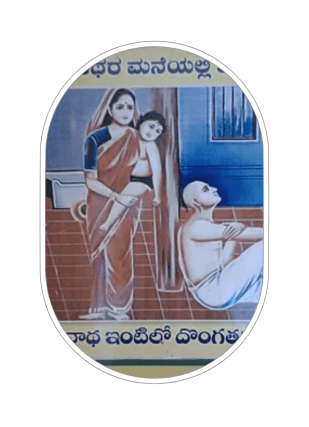
1614
Sri Venkatanatha married Smt. Saraswathi Bai in the same year and had a son Sri Lakshminarayanacharya. After his marriage, Sri Venkatanatha and his family went to Kumbakonam where he studied the Dwaita vedantha, grammar and literary works under his guru, Sri Sudheendra Theertha.
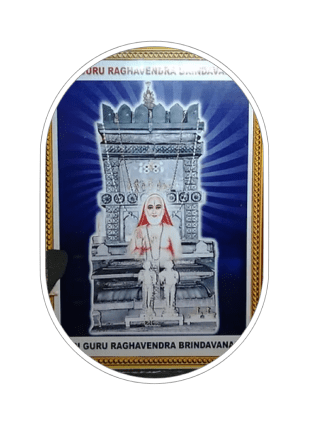
1671
Sri Raghavendra Swamy attained Jeeva Samadhi on Dwitiya Day of Sravana Krishna Paksha 1671. This date is celebrated each year as Sri Raghavendra Swamy Aradhana at Brindavana all over the world. The Raghavendra Mutt in Mantralayam housing his Brindavana is visited by thousands of devotees every year.
SRI RAGHAVENDRA TIRTHARU
a short note on his Life & Works
Raghavendra means - it is the name of Ramachandra Devaru
“Ra“ – destroys mountains of sins
“Gha“ – provides deep devotion
“ven“ – speedy liberation from the cycle of life and death
“dra“ – removes all our sadness
Shanku Karna
Prahalada Raja
Baahleeka Raja
Vyasa Raja
Guru Rajar ( Sri Raghavendra Tirtharu )
Brahmadevaru
Shanku Karna delayed in bringing the flowers for Brahmadevara pooja
To be born as Daithya
Gautama Gothra
Timmanna Bhattaru
Gobikaamba
Kanakachala Bhattaru
Gururaja
Venkataamba
Tirupathi Timmappa
1595 AD (shaleevahana shaka 1518)
Manmathanama Samvatsara
Mrigashirsha
Phalguna Shudda Saptami
Venkatanatha
Bhuvanagiri
1598 AD (shalivahana shaka 1520)
1604 AD (shalivahana shaka 1526)
Lakshminarasimhacharyaru (His brother in law)
Kaveri Pattanam
1616 AD
Saraswathi
Kaveri Pattanam
Lakshminarayana
Sri Sudheendra Tirtharu @ Kumbakona
“Vagdevi”
Narayanacharya (his sister’s son)
1621 AD (shalivahana 1543) Durmati samvatsara Phalguna shukla dwiteeya
Tanjavore
In Court of King Raghunatha of Tanjavore
Goddess Saraswathi
Sri Yadavendra Tirtharu
Sri Raghavendra Tirtharu
Sri Sudheendra Tirtharu
Sri yogeendra Tirtharu
Virodhi Samvatsara (1671AD)
Shravana Bahula Dwiteeya
Adoni Administrator Siddi Masanad Khan
Prahladarajaru had done Yaaga at Manchale
Appannacharyaru
100 Yrs – Life span ; 300 Yrs – upadeshamrutha, grantha, will shine for 300+ years; 700 Yrs – Tenure in the Vrundavana sannidhana
for Vadeendra Tirtharu
It was the same rock which Ramachandra Devaru sat while he was in seach of Seethakruthi
Manchalamma – any one who wishes to have the darshana of Rayaru must first visit Manchalamma, then only Rayaru as was promised by Rayaru to Manchalamma
He entered Vrundavana alive next only to Vadirajaru ( sashareera vrundavana ). He was holding japa maala in his right hand and he had Sarvamoola Grantha & Teekaas, Tippanees on the Vyasapeetha
Sri Varadendra Thirtharu – “SAPTAMO MATSAMO YOGI VARADENDRO BHAVISHYATI”
Sri Sumatheendra Tirtharu – “Third yathi after me will be Sumatheendra Tirtharu, who will do all the works.”
“SAAKSHEE HAYAASYOTRAHI”
“Karmaja Devatgegalu”
19th kakshya ; – but when he has avesha of vayu, he will be in the 15th Kakshya
Sri Vibudendra Tirtha Mutt
“Mahabhaashyacharya”
In Honnali, Rayaru entered the Vrundavana directly ( it is not a Mruttika Vrundavana ). It is called as the Second Vrundavana
“Sri Krishna charitrya Manjari”
“Sri Rama charitrya Manjari”
“Bhava Sangraha”
“Bhatta Sangraha”
“Tatva Manjari”
“Chandrika prakasha”
“Tithi Nirnaya”
“Nadee Taratamya Stotra”
“Parimala”
“Indu enage Govinda”
“Bhava Deepa”
“Anu Madhwa Vijaya” (Prameya Navamalika)
Tantradeepika, Parimala, Chandrika prakasha
Dheera Venugopala
“Khandaarthaas”
“Raama ,Narahari, Krishna, Hayagreeva”
